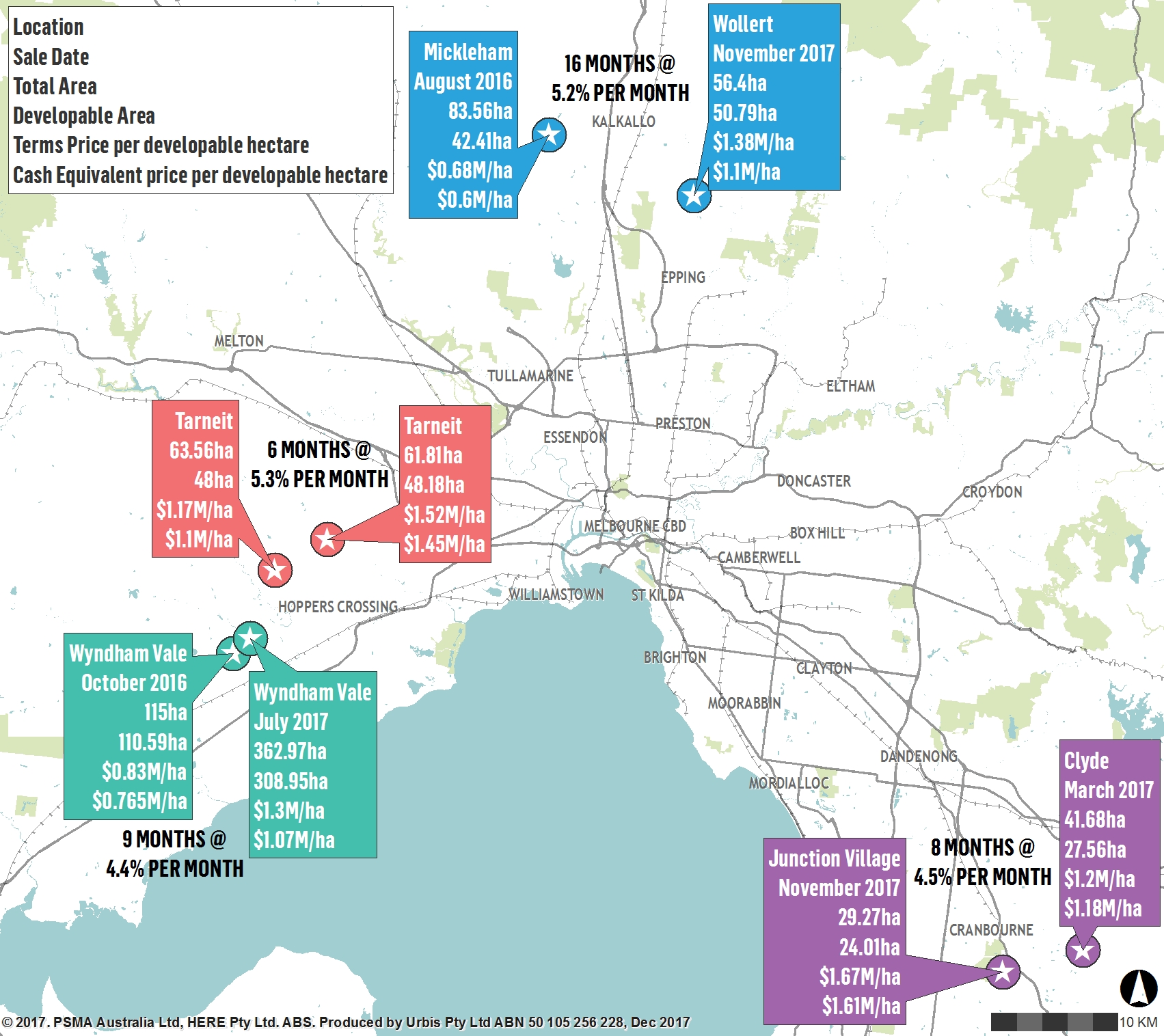The Melbourne greenfield development site market has experienced a significant repricing over the last 12-18 months.
The primary cause of the development site repricing is the well-publicised significant growth in house lot prices being sold off the plan. This growth has been fueled by population growth, historically low interest rates, Government incentives and supply of new estates with planning approval falling behind demand.
Urbis’ analysis highlights four examples in Melbourne’s greenfield areas, of development site price growth on a cash equivalent per developable hectare basis. These sales show that development site prices have been growing at some 5% per month over the last 12 to 18 months (all growth rates quoted are not compounding).

